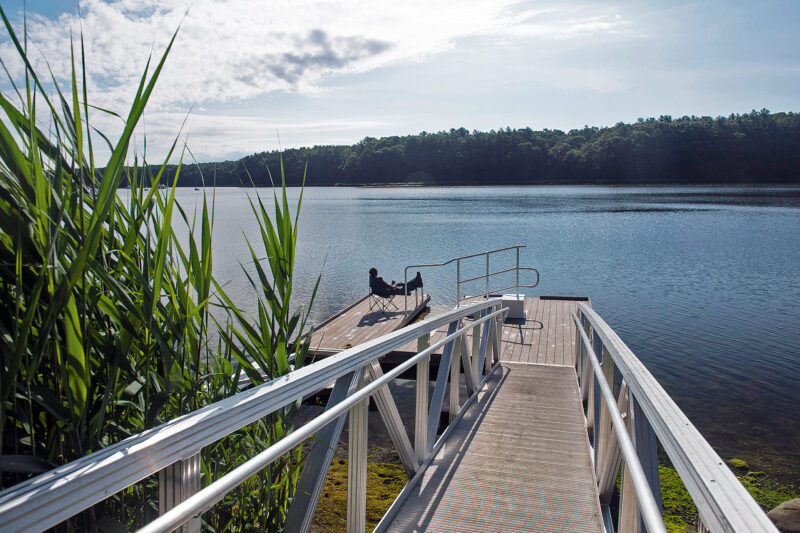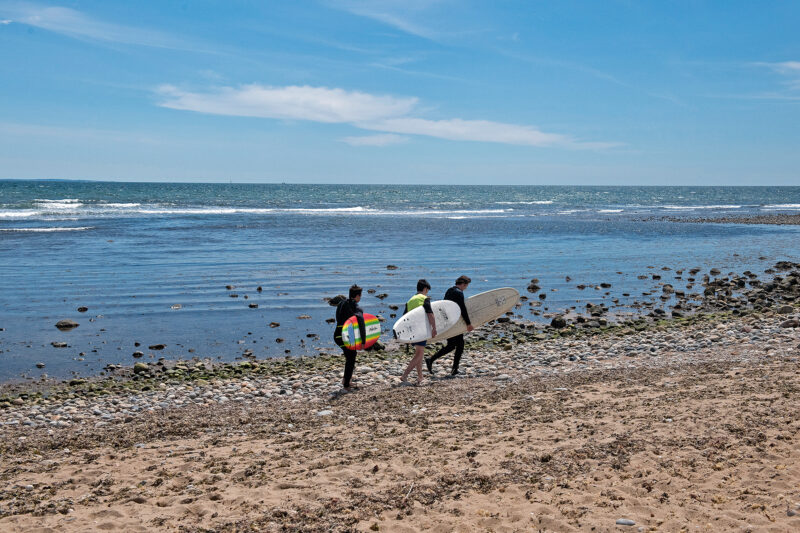Shoreline Access App Gets an Update
HOW COMFORTABLE DO YOU FEEL SCALING OFF A CLIFF to get to the shore? The answer for me is, not very.
This matters because over the summer, graduate student Erica Meier and I visited hundreds of Rhode Island’s public shoreline access points from beaches to boat ramps to narrow paths to the shore and discovered that a number of them are surprisingly precarious.
Our task was to update Shoreline-RI.com, a listing of such sites that provides descriptions, photographs, and routable directions. But first we had to evaluate whether to include some of these sites at all—were they visible, overgrown, or would we be sending unsuspecting kayakers or anglers to certain death?
One site in Jamestown had us scrambling down a human-sized rabbit hole, the entrance to its steep and slippery dirt path largely obscured by shrubbery. The payoff at the end was a beautiful view of Narragansett Bay from the top of a rocky drop-off of perhaps 15-20 feet.
Could you rappel down the rocks to actually get to the water? Would not recommend. After some debate, we decided to keep that site on the list.

It is a Coastal Resources Management Council (CRMC)-designated right-of-way, after all, and to remove it would bring it one step closer to being lost altogether. Another CRMC site on Aquidneck Island, however, was quickly rejected.
Though it even appeared as a public access site on Google Maps, it was a grassy path to a steep escarpment so far above the water that no real access, even for angling, seemed remotely possible.
We found out later that some sites —this one was a stormwater outlet—that are publicly owned had been des-ignated as public access sites years ago, though they may not be particularly desirable as such.
But many more sites turned out to be hidden gems—nondescript paths between houses leading to beautiful ocean vistas, rocky outcroppings hosting handfuls of anglers fishing after work, and 18th century coastal batteries tucked into residential neighborhoods reminding visitors of Rhode Island’s Revolutionary War history.
Some of these sites, primarily those that are simple paths to the shore, are designated by CRMC. Others are managed by the Rhode Island Department of Environmental Management, and still more are owned by municipalities, the federal government, or private entities.
Meier, a Rhode Island Sea Grant-University of Rhode Island Masters of Environmental Science and Management Communications Fellow, has been working to update each of the site listings with the information and photographs collected over the last several months.

Though it even appeared as a public access site on Google Maps, it was a grassy path to a steep escarpment so far above the water that no real access, even for angling, seemed remotely possible.
We found out later that some sites —this one was a stormwater outlet—that are publicly owned had been des-ignated as public access sites years ago, though they may not be particularly desirable as such.
We invite you to check out the website and explore some of the sites this fall and winter—as the locals will (or won’t) tell you, offseason is the best season!
Enjoy!
Contact Us
Telephone: (401) 874-6805
Email: allard@uri.edu
Contributor Guidelines
Please review submission guidelines to be considered. d


